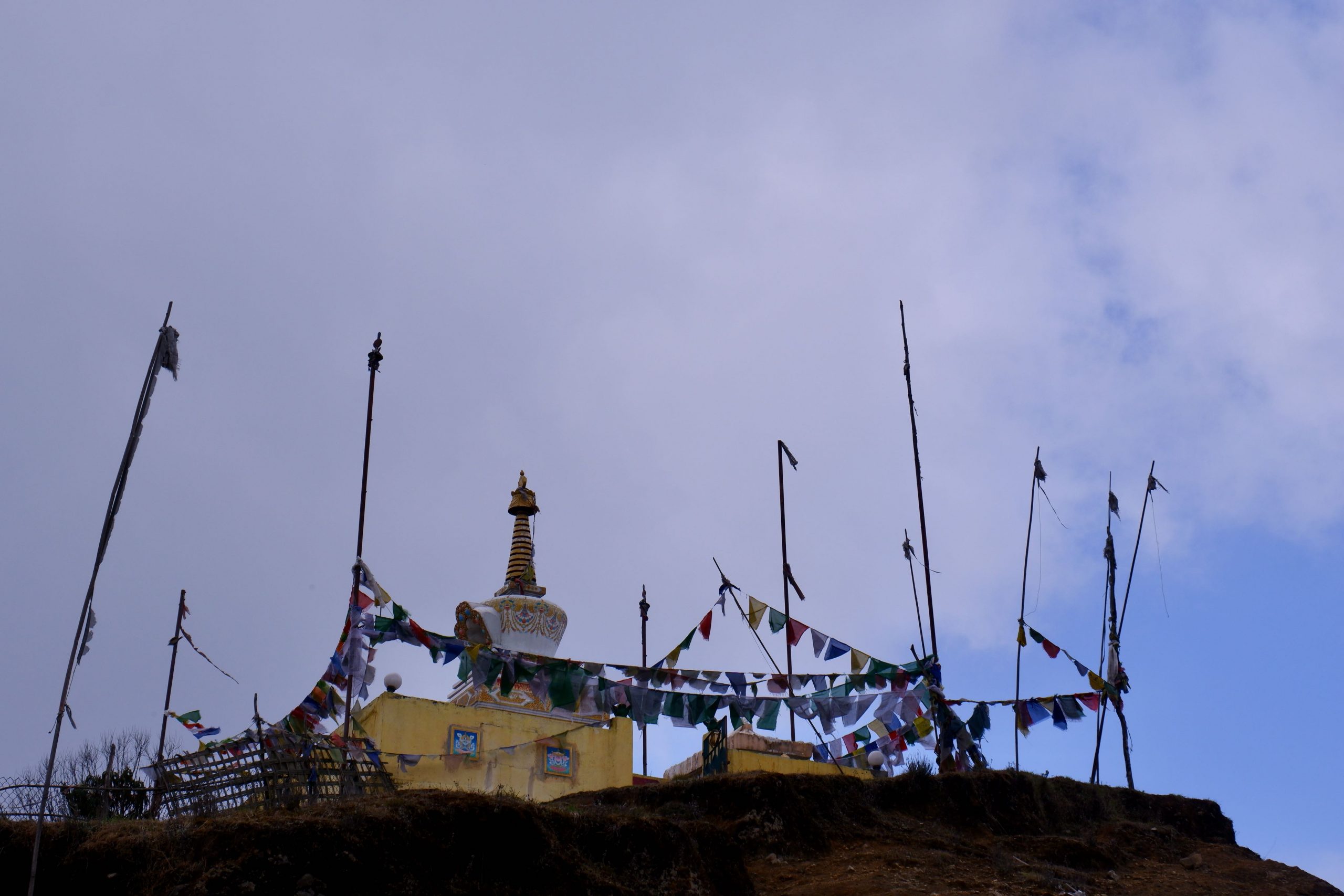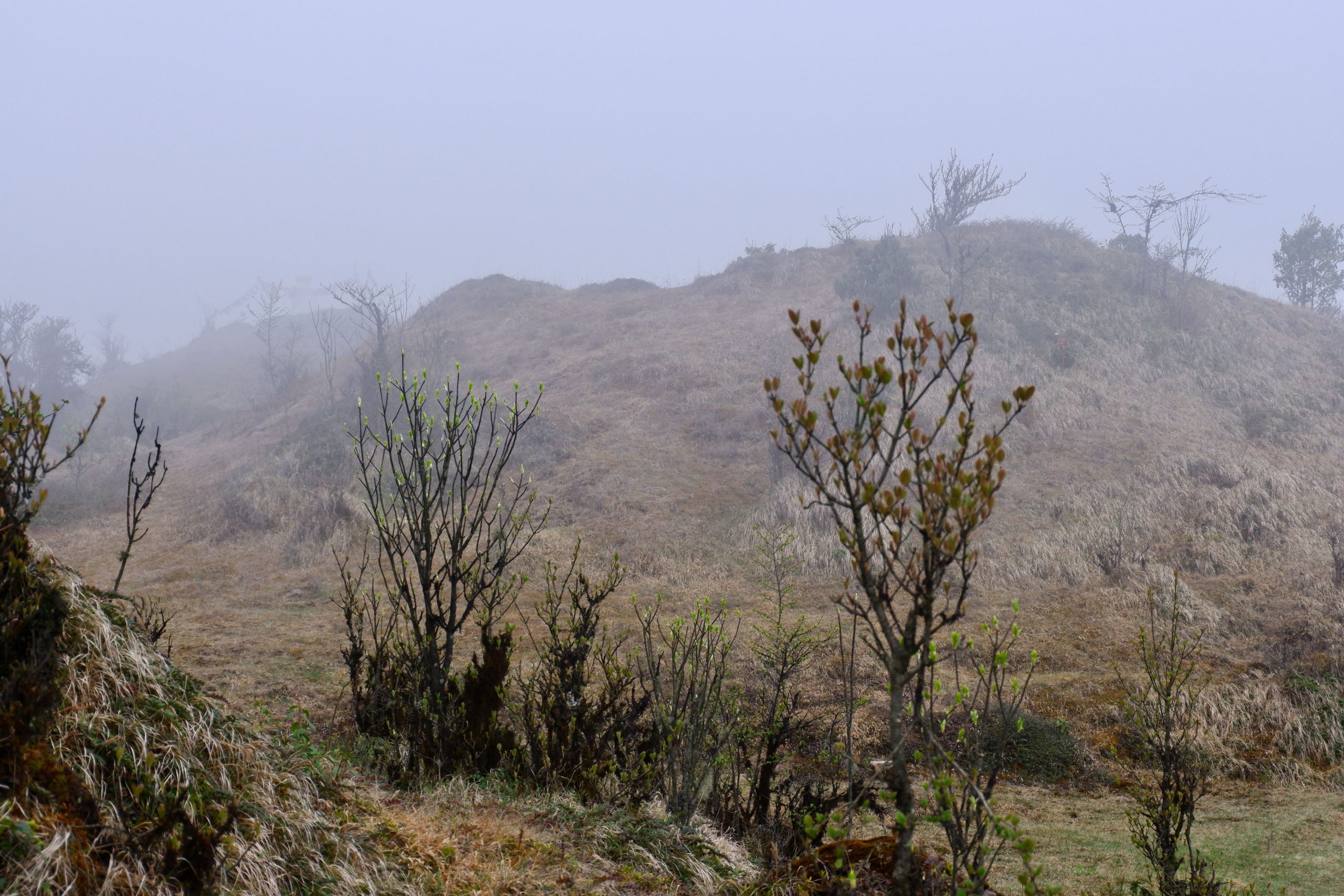Trek Tonglu-Garibas – The birds are chirping between the Rhododendren
16. April 2025

Yay! The morning actually started promisingly! I was able to catch a glimpse of high mountains (unfortunately not recognisable in the picture) and went for a pre-breakfast walk to old little stupas on a hill and came across horses. They have horses here for a few trekking tourists who want to have their luggage carried.
 1
1
 2
2
 3
3
 4
4
Then the sun even came out and bathed the lodge in beautiful light.
 Lodge
Lodge
 Kitchen in Lodge
Kitchen in Lodge
Then we soon set off over a small hill down to Nepal to the village of Tumling. This was absolutely the most beautiful part of the whole hike and unfortunately far too short. Distance, altitude, view – super!
 1
1
 2
2
 3
3
 4
4
 5
5
 6
6
There was a tea break in Tumling. Here, too, a small group of young men sat around and passed the time.
 Teahouse
Teahouse
It is the time of the rhododendron blossom. There are over 25 different species of rhododendron in the area. Some had already dropped their flowers, others were still in full bloom. More and more clouds pushed in front of the sun – and at some point it was foggy again.
 7
7
 8
8
 9
9
 10
10
 11
11
 12
12
Then we were already down in Garibas at around 2,550 metres. The day was a bit short with only 3 hours of walking, but the next place was already in Nepal again and therefore forbidden and the next one in India was too far away. Garibas is right on the border – in the Nepalese part there was a lodge with wifi where we could eat and hang out, but we had to sleep in a government-run trekkers’ hut that lacked love and beauty. There was also a Czech family with children and a Scottish family with adult children. I was annoyed that I hadn’t taken a book with me and was a little bored. The weather was too gloomy and the landscape wasn’t nice enough for me to walk around.
But I can still tell you something about this route. The British had chosen Darjeeling as a summer residence and some of them liked to wander around and explore the flora and fauna. At that time, they still travelled with horses and tents. They also discovered the magnificent views of the 8,000 metre peaks of Sandakphu (the next destination). “Trekking started to become popular in the 1950s and this route was one of the first in India to be popularly travelled. Accommodation was also built in the 1970s/80s. There were and are villages here, but on the centrepiece, a long ridge from Sandakphu to Phalut, there was nothing. When the huts were built, it was possible to hike without all the camping equipment.
The Singalila area was declared a national park in 1986. In addition to the rhododendrons, the botany is really beautiful and diverse. Bamboo also grows here – a treat for the red panda, which can be spotted quite easily here. Especially the next day, the chances of seeing one should not be bad.
Would I get to see a red panda? Read about it in the next blog post!
